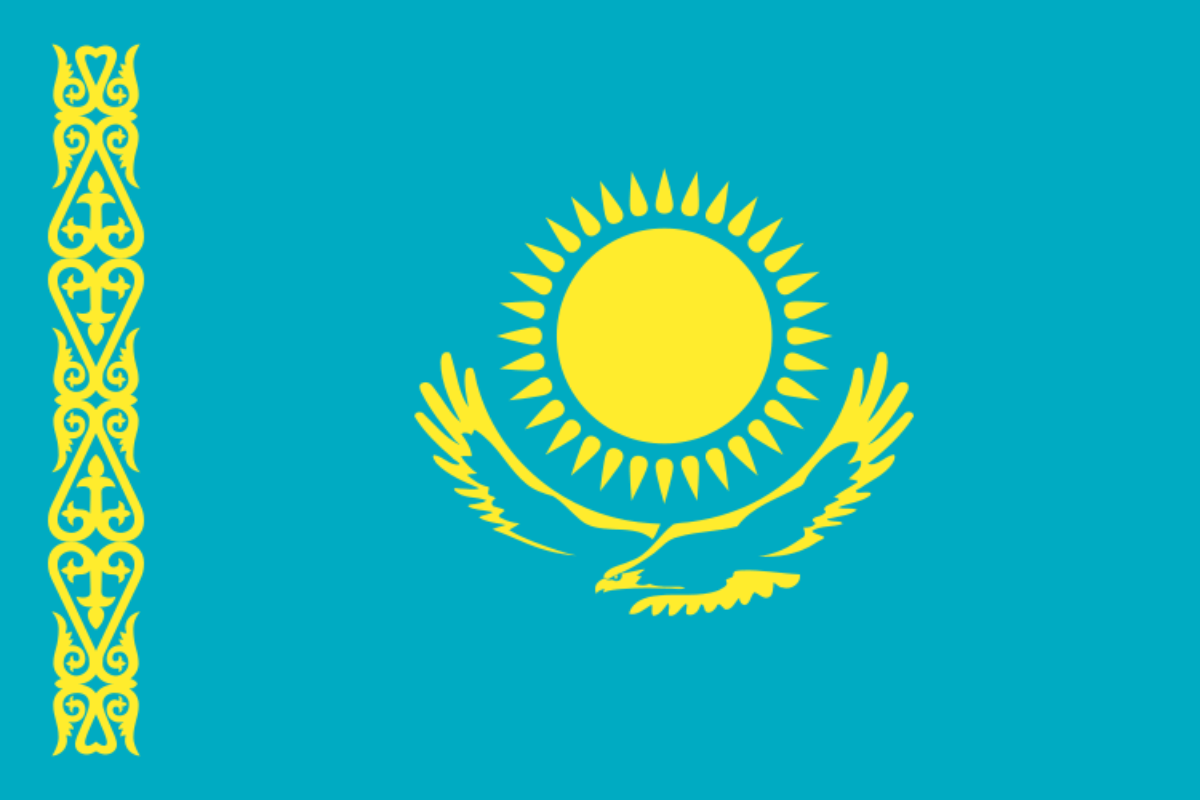The national animal of Kazakhstan is the steppe eagle. This iconic eagle is an important symbol to many countries in this part of the world, and Kazakhstan is no different. Steppe eagles live, as their name suggests, in deserts and steppes and so is perfectly suited to life in Kazakhstan where it is a very common sight.
Eagles in general are among the most iconic and important symbols in all of human history.
They feature in art, literature, livery and coats of arms all over the world. In the modern day, Kazakhstan has then many reasons to adopt this eagle as its national symbol.
Let’s find out more.

What is the national animal of Kazakhstan?
The national animal of Kazakhstan is the steppe eagle.
These eagles are, naturally, a species that is found mostly in dry, arid regions and sometimes in grassy steppe lands.
Of course they are birds of prey and are very closely related to the sedentary tawny eagle, to the point that both species were seen as conspecific in the past.
In modern taxonomy, though, they have been split based on important differences in their anatomy.
There remains debate about just how closely related the two species are, though.
They are highly specialized as predators, and while they will hunt a variety of small mammals and other prey, they are far more inclined to hunt ground squirrels.
They inhabit areas of steppe that are mostly treeless, nesting in outcrops on the ground on a slight rise and even sometimes nest in wide, flatter ground.
This makes them more or less unique among eagle species as no other species nests primarily on the ground.
They are migratory birds and each year they will embark on a fairly staggering migration moving out of its entire breeding range.
They are much more sluggish in the winter and don’t tend to hunt much live prey, preferring to eat insects, or scavenge from landfill or carrion.
Though they are still seen in huge numbers during migration periods, their population has decline significantly in recent years and they are now in some danger.
They tend to lay eggs in clutches of three but typically only one chick will survive to adulthood.
They were first distinguished in modern taxonomy in 1833 by Brian Houghton Hodgson.
They are often confused with the golden eagle but these two are certainly a distinct species as we’ll look at shortly.
Why is the steppe eagle the national animal of Kazakhstan?
The steppe eagle is the national animal of Kazakhstan for a variety of reasons.
Firstly, of course, the animal is a symbol for a variety of things in itself which are important to Kazakh national identity.
Eagles and the steppe eagle in particular are symbols of freedom, liberty, strength and courage.
They are widely recognized as being at the top of their own food chain and able to travel wherever they need to with their enormous stamina for long journeys on the wing.
The steppe eagle features on the Kazakh flag and thus is an important emblem also in Kazakhstan.
A country’s native wildlife in and of itself, regardless of any specific symbolic importance it might have, is often a very important aspect of national identity and so the steppe eagle is also important for this reason.
Beyond this, though, another very common reason for the decision to make an animal a country’s national animal is its conservation status.
Steppe eagles, as we’ll look at in more detail, are deeply threatened today and their population numbers continue to decline.
By making the eagle the national animal, the Kazakh government hopes to draw attention to this fact and aid in the effort to save the species.
Is a steppe eagle the same as a golden eagle?
The steppe eagle and the golden eagle are distinct species and not the same.
They do, of course, look very similar, and at first glance you might be forgiven for thinking one was the other.
Steppe eagles tend to be smaller though some can reach the size of a golden.
The most immediately apparent distinction, though, is the plumage.
Golden eagles, naturally, have spots of gold covering their fur; steppe eagles are more of a dull brown all over.
This is the simplest way to tell them apart; golden eagles are golden!
Is the steppe eagle endangered?
The steppe eagle unfortunately is endangered today and faces a variety of challenges to its continued existence.
Among the biggest threats they face are from steppe fires and pests in their habitat making it very difficult for them to live there.
They are also routinely persecuted by humans and their nests are frequently trampled by moving herds of livestock.
They are also frequently killed by electrocution on power lines and pylons.
The decline of the population is thought to be more than 50% over the last century or so.
The species is threatened, then, and its future hangs in the balance; we can hope Kazakhstan’s choice can improve their chances at survival.
So, their future hangs in the balance then, and this among many others is an important reason why the steppe eagle has become Kazakhstan’s national symbol.
It is hard not to be inspired by the sight of an eagle flying through the air, and plainly that in itself has come to be an almost universal human symbol.
Kazakhstan also hopes to protect this incredible bird’s future by making it the country’s official national animal.

